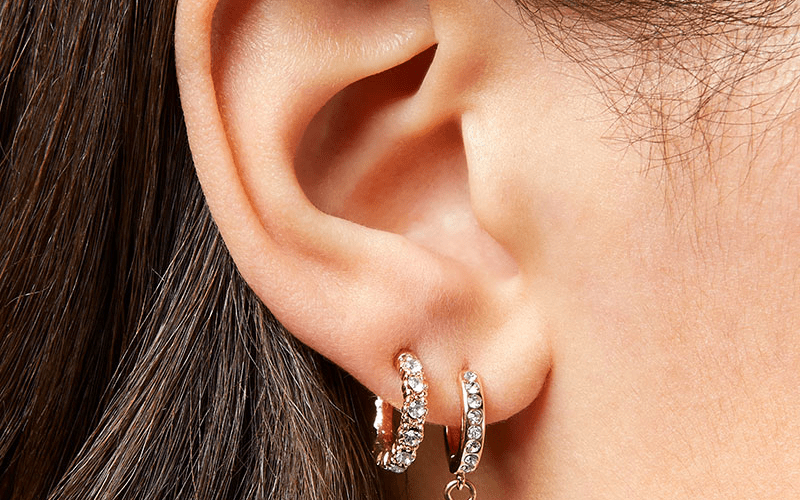
You’ve had your ears pierced. Congratulations! Now, what do you do with them? If you’re like most people who pierce their own ears, the answer is probably nothing. That’s a shame, because it’s important to keep your earrings clean and well-maintained if you want them to last as long as possible. The good news is that if you’re following the right steps for caring for your ear piercings (and avoiding these common mistakes), any jewelry should last for at least a year or two with very little maintenance required afterward.
1. You’re changing your earrings too soon
One of the most common mistakes people make is removing their newly pierced earrings and replacing them with something new a few weeks later. While this is perfectly fine to do, it’s important to remember that you can wait up to six weeks before doing so—and if you do it too soon, you may risk damaging the piercing.
2. You’re changing your earrings too late
Another common mistake is waiting too long before changing an old pair of pierced earrings for new ones; this can also cause problems with infection or irritation. The best advice is simply to follow your doctor’s instructions regarding when and how often they should be replaced; these instructions will vary based on the type of piercing and whether or not there are any other factors involved (such as allergies).
3. You’re Using Dirty Tools
- Use a clean towel to dry your earrings after you take them out. It’s important to keep the area around your piercing clean as well, so don’t use dirty towels, cotton swabs or Q-tips. Instead, gently pat the area with a clean tissue or paper towel.
- Use tweezers to remove your earrings. Using your fingers can cause damage to both skin and jewelry—and if you’re trying to put back in an old pair of earrings that are missing a post? You might not be able to pull it off without tearing through some delicate tissue first!
- Don’t use sharp objects such as knives or scissors when removing external piercings either; even if they’re too small for you to see on the outside of an earlobe (or nose), these tiny slivers can cut into internal cartilage when touched forcefully enough against soft flesh like this–making removal even more difficult than expected!
4. You’re Hoping Your Earring Infection Will Go Away on Its Own
You may have heard that it takes about two weeks for an ear piercing to heal. But what happens if you get an infection in your piercing? How long will it take to go away on its own? The answer is: not very long at all. In fact, if you don’t take care of the infection now, it’s likely to get worse and require antibiotic treatment later on.
The best thing to do when you notice one of these symptoms is visit your doctor right away! Your doctor can help diagnose whether or not an infection has set in (and give you advice on how to treat it). If they say that there’s no need for further action, then congratulations! You’ve got a healthy earring hole and can go back to enjoying wearing your favorite dangly earrings once again. It is very important to say that you should choose piercing experts, such as Blomdahl, because that way you will be able to prevent all the troubles with the piercing!
5. You’re Not Cleaning Your Piercing
The most important thing to remember is not to put anything on your piercing besides a saline solution. That means no hydrogen peroxide, soap or other products. Just water and some gentle rubbing with a clean cotton ball is all you need!
You should also be careful when cleaning your ears not to use your fingers as this can push dirt deeper into the ear canal and cause an infection.
6. You’re Skipping the Antibiotic Ointment
Perhaps most important step in your piercing care routine is using an antibiotic ointment. Antibiotic ointments help to prevent infection by killing bacteria that may cause infection. It’s also important to note that not all earrings are made of body-safe materials, so if you’re unsure about the metal of your earring, it’s a good idea to apply an antibiotic ointment over the top of it as a precautionary measure.
7. You’re Not Taking Proper Care of a Cartilage Piercing
Cartilage piercings take much longer to heal than other piercings, so you should keep them covered with a bandage for the first two weeks after getting pierced. Change your bandage daily and wash it with saline solution before applying a fresh one. It’s also important to cleanse the area around your piercing with an alcohol-soaked cotton ball or pad once or twice daily in addition to using saline solution on it as part of your regular cleaning routine—this will help prevent infection by keeping germs away from skin that might otherwise get trapped beneath jewelry (which could lead to irritation).
We hope that these tips will help you take better care of your ear piercings and avoid an infection. Remember before doing any piercing, make sure you follow sensitive ears guidelines. To clean your jewelry regularly, change it at least every three months and follow the advice of your piercer or doctor if they recommend antibiotic ointment or other treatments. If you have any questions about proper ear piercing care, consult with a doctor or reputable piercer who can give you tips on how best to maintain healthy ears while wearing jewelry.





